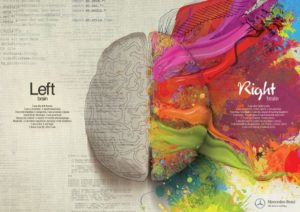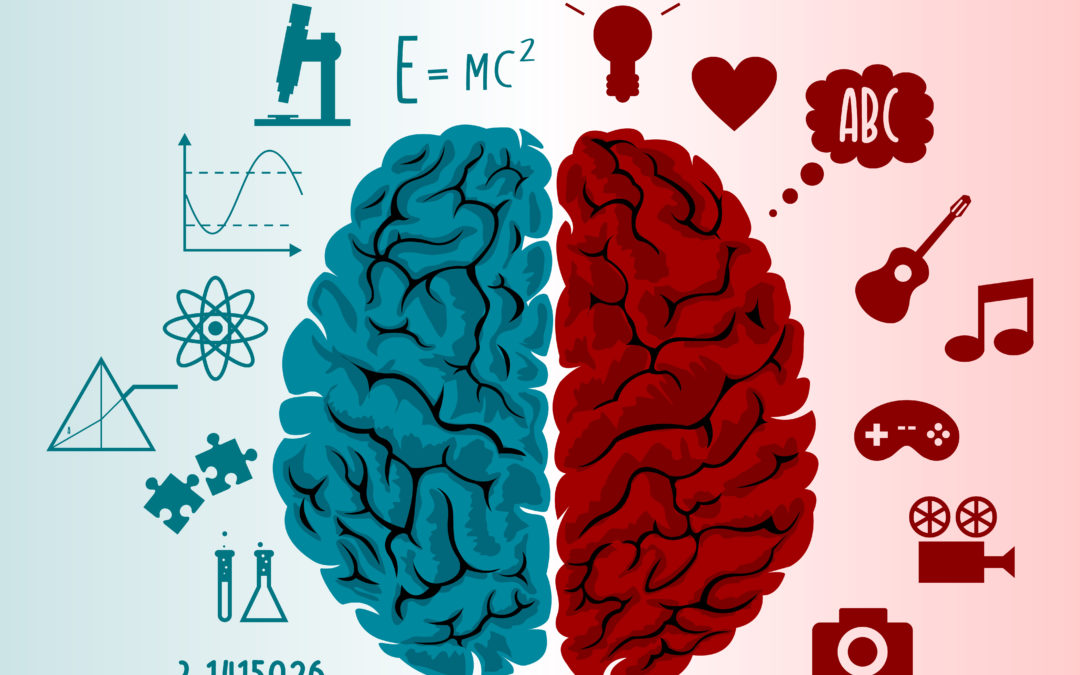The brain is divided (physically), but surprisingly unified in its operation. The hemispheres, however, constantly prompt people to argue for and against their limitations and strengths based on whether or not they are left-hemisphere dominant or right- hemisphere dominant.
Still in two minds on this topic? Let’s shine a little light on this so that you know what you’re dealing with in your co-workers and yourself.
Physically, the brain presents two hemispheres – a left-hemisphere and a right-hemisphere. There are few (if any) actual differences between them, barring the fact that they are split; separated by a bridge of nerve tissue called the corpus callosum. However, the tasks they tend to handle, and how they handle information, vary significantly. “Tend” is the operative word here because the simple fact is that both hemispheres are actively engaged in all tasks.
The brain isn’t a series of machines that work on one thing or another, it’s a nest of activity that has tendencies, more than rules. What’s worth noting is that the left hemisphere is prone to analysis, while the right hemisphere prefers engagement.
Common Left-Hemisphere activities include:
• Logic and math
• Language
• Directions
• Rational processing
• Planning
• Sequence
Common Right-Hemisphere activities include:
• Experiencing emotions
• Creative tasks
• Non verbal concepts
• Spontaneity
• Intuitive problem-solving
• Random processing
To think of this in a sort of business shorthand, the left-hemisphere narrows in on things while the right-hemisphere opens possibilities, and looks at relationship between things.
“While the right hemisphere grounds our experience, the left dissects it. The right hemisphere is at home in our ‘embodied existence’ in art and in religion. The left is at home in designing tools with which to master and understand the world. The left hemisphere treats us and our environment as an assemblage of machines; the right hemisphere treats us as people. The left systematises while the right empathises.” — Adam Zeman, Professor of Cognitive and Behavioural Neurology, University of Exeter in A Brain of Two Halves
So how will you know if you’re working with “Left Brained” people versus “Right Brained” people? You won’t. Quite simply, there is no such thing, from a neuroscience perspective. The data suggests that the brain doesn’t have a bias or weighting one way or another, but we may develop behavioural habits over time that have it appear that way.
The leadership question that should remain close at hand as you work with your team is, “What kind of thinking do we need for this situation?” If it is a possibility-based issue, requiring imagination and creative out-of-the-box thinking, prompt for openness, spontaneity, and emotion. If thinking that will narrow to a decision is required, bring more process, rigor and sequence.
The brain has two halves, but doesn’t respond well to simplistic either-or treatment; neither does your team. Why work with half a brain, when you can rev up the whole engine?
…by the way, Mercedes did a great ad some time ago that reflected on these exact concepts

Here was the copy for that ad:
Left brain
I am the left brain.
I am a scientist. A mathematician.
I love the familiar. I categorize. I am accurate. Linear.
Analytical. Strategic. I am practical.
Always in control. A master of words and language.
Realistic. I calculate equations and play with numbers.
I am order. I am logic.
I know exactly who I am.
Right brain
I am the right brain.
I am creativity. A free spirit. I am passion.
Yearning. Sensuality. I am the sound of roaring laughter.
I am taste. The feeling of sand beneath bare feet.
I am movement. Vivid colors.
I am the urge to paint on an empty canvas.
I am boundless imagination. Art. Poetry. I sense. I feel.
I am everything I wanted to be.
Mercedes-Benz
The best or nothing.


Recent Comments